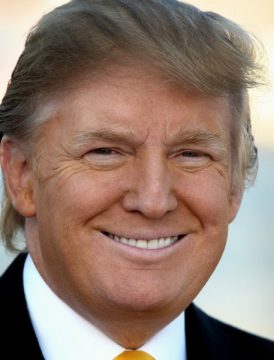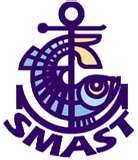Tag Archives: Conservation Law Foundation
Storm brews over Maine’s monument offshore, too
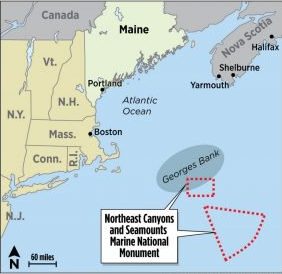 Zinke has recommended that the Northeast Canyons and Seamounts Marine National Monument – a 4,913-square-mile area of underwater canyons, thousand-year-old coral forests, and volcanic mountains on and beyond the southern edge of Georges Bank at the mouth of the Gulf of Maine – be opened to commercial fishing, a move proponents say would defeat its purpose.,, The heads of eight of the nation’s fisheries management councils – the industry-led bodies that implement fisheries regulations in federal waters – were already on record against the commercial fishing restrictions.,, Peter Shelley of the Conservation Law Foundation, an environmental attorney who is watching the case closely, strongly disagrees. click here to read the story 08:35
Zinke has recommended that the Northeast Canyons and Seamounts Marine National Monument – a 4,913-square-mile area of underwater canyons, thousand-year-old coral forests, and volcanic mountains on and beyond the southern edge of Georges Bank at the mouth of the Gulf of Maine – be opened to commercial fishing, a move proponents say would defeat its purpose.,, The heads of eight of the nation’s fisheries management councils – the industry-led bodies that implement fisheries regulations in federal waters – were already on record against the commercial fishing restrictions.,, Peter Shelley of the Conservation Law Foundation, an environmental attorney who is watching the case closely, strongly disagrees. click here to read the story 08:35

“This is the stupidest thing I ever did,” ‘Codfather’ is sentenced to 46 months for skirting tax and fishing regulations
Carlos Rafael, the New Bedford, Mass. fishing magnate whose brash business style earned him the nickname “The Codfather,” was sentenced to nearly four years in prison Monday for tax evasion and flouting fishing quotas, a case that could impact the ability of hundreds of fishermen to continue working out of the port where he ran his illicit enterprise. In the federal courthouse in Boston, Rafael, 65, told US District Judge William G. Young he mislabeled more than 700,000 pounds of fish not out of greed, but to protect workers whose jobs were threatened by limits on dwindling cod stocks. click here to read the story 15:04
And just four years ago, we posted this article that should be revisited at this time. Carlos Rafael and His Fish Are the American Dream – click here to read the story.
Owner of One of the Nation’s Largest Commercial Fishing Businesses Sentenced for Falsifying Records & Smuggling Proceeds Abroad, US Justice Dept. click here to read the presser
Conservation Law Foundation submits victim impact statement in Carlos Rafael case
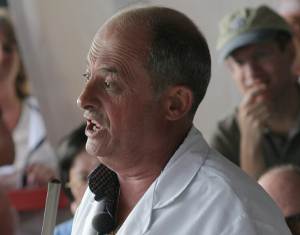 Within the past 10 days, the Conservation Law Foundation sent three letters to various individuals involved — either directly or indirectly — with the Carlos Rafael case. The foundation doesn’t represent any party directly, but its goal is to “use the law, science and the market to create solutions that preserve our natural resources, build healthy communities, and sustain a vibrant economy,” according to its website. CLF sees Rafael’s guilty plea in March to illegal fishing as infringing on its principles. click here to read the story 21:18
Within the past 10 days, the Conservation Law Foundation sent three letters to various individuals involved — either directly or indirectly — with the Carlos Rafael case. The foundation doesn’t represent any party directly, but its goal is to “use the law, science and the market to create solutions that preserve our natural resources, build healthy communities, and sustain a vibrant economy,” according to its website. CLF sees Rafael’s guilty plea in March to illegal fishing as infringing on its principles. click here to read the story 21:18
Cause of Action Digs In: Northeast Canyons and Seamounts Designation: Some Stakeholders Are More Equal Than Others
 This week we review the procedural history of the Northeast Canyons and Seamounts Marine National Monument (“Atlantic Monument” or “Monument”) designation, which was made by President Obama on September 15, 2016 (“Proclamation”), and show that certain, privileged, non-governmental entities were granted access to detailed information on the forthcoming monument and allowed input into the designation, while other stakeholders—notably those with specific legal authority, such as Regional Fishery Councils—were denied input and access.,,, The following history, derived from the partial responses to CoA Institute’s FOIA requests and other publicly available documents, is illustrative: In March 2015, the Conservation Law Foundation (“CLF”) and Natural Resources Defense Council (“NRDC”),,, click here to read the story. Hang onto your Sou’wester. 17:53
This week we review the procedural history of the Northeast Canyons and Seamounts Marine National Monument (“Atlantic Monument” or “Monument”) designation, which was made by President Obama on September 15, 2016 (“Proclamation”), and show that certain, privileged, non-governmental entities were granted access to detailed information on the forthcoming monument and allowed input into the designation, while other stakeholders—notably those with specific legal authority, such as Regional Fishery Councils—were denied input and access.,,, The following history, derived from the partial responses to CoA Institute’s FOIA requests and other publicly available documents, is illustrative: In March 2015, the Conservation Law Foundation (“CLF”) and Natural Resources Defense Council (“NRDC”),,, click here to read the story. Hang onto your Sou’wester. 17:53
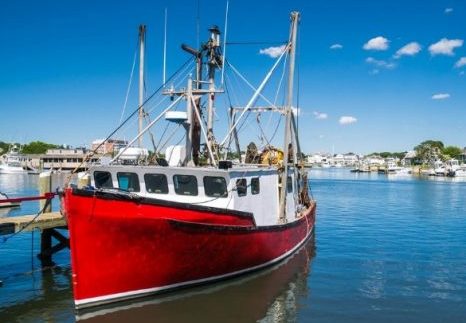
Advancing fishing rule aims to protect deep-sea coral in New England waters
Fishing trawlers bring in an average of $6.4 million annually to Bay State ports from fish scooped off seabeds 600 meters or more below the surface of New England waters. In an effort to save coral on the ocean floor, the New England Fisheries Management Council is advancing a proposed restriction on draggers and trawlers fishing at those depths. The council’s Habitat Committee signed off Tuesday on the proposal, which affect fishing operations in a roughly 25,000 square mile area. If it is passed by the full council it would need to go through the National Marine Fisheries Service, also known as NOAA Fisheries, before it would go into effect. Environmental groups Wild Oceans, Earthjustice, Pew Charitable Trusts and Conservation Law Foundation urged the council’s scientists to study an alternative proposal, which they said would protect more coral than the plan the council advanced. The council agreed to study the conservation groups’ proposal. click here to read the story 16:30
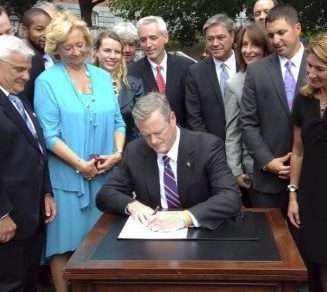
Not exactly a breeze: Offshore wind still faces challenges
Amid all of the challenges that could face offshore wind power along the East Coast — legal disputes from commercial fishing advocates, construction plans altered by whale migrations, President Donald Trump’s emphasis on revitalizing fossil fuels and more — some promising news for renewable industry supporters arrived in mid-March. That’s when a telling indication of how offshore wind power might fare under President Trump was delivered, after an uncertain, wait-and-see winter. Following months of silence about offshore wind, a statement by Secretary of the Interior Ryan Zinke gave an early glimpse of the administration’s tone. click here to read the story 09:22
NRDC, CLF, CBD Acts to Defend Atlantic’s First Marine Monument
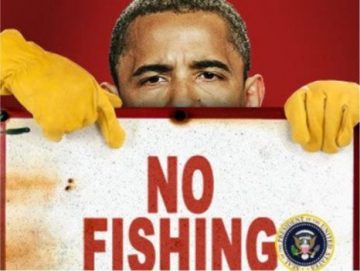 NRDC is seeking to intervene in a lawsuit that challenges the New England marine monument established last September—the first such monument off the continental U.S. Together with other supporters of the Northeast Canyons and Seamounts Marine National Monument, NRDC today filed this motion to intervene in a lawsuit filed earlier this month by five regional commercial fishing associations. This ocean park spans almost 5,000 miles and safeguards ancient coral gardens, endangered sperm whales, Atlantic puffins, and literally thousands of other animal species for the benefit of all Americans. Our goal is to prevent it from being handed back to private industries for commercial exploitation, including commercial fishing, seismic surveying, oil and gas drilling, and mining. We also want to protect the President’s authority to designate future marine monuments and demonstrate that the other four marine monuments–designated by Presidents Obama and George W. Bush—were legally created. Our partners seeking to intervene include a naturalist who leads whale watch tours, Conservation Law Foundation and the Center for Biological Diversity (CBD). Read the rest of this stuff here 17:03
NRDC is seeking to intervene in a lawsuit that challenges the New England marine monument established last September—the first such monument off the continental U.S. Together with other supporters of the Northeast Canyons and Seamounts Marine National Monument, NRDC today filed this motion to intervene in a lawsuit filed earlier this month by five regional commercial fishing associations. This ocean park spans almost 5,000 miles and safeguards ancient coral gardens, endangered sperm whales, Atlantic puffins, and literally thousands of other animal species for the benefit of all Americans. Our goal is to prevent it from being handed back to private industries for commercial exploitation, including commercial fishing, seismic surveying, oil and gas drilling, and mining. We also want to protect the President’s authority to designate future marine monuments and demonstrate that the other four marine monuments–designated by Presidents Obama and George W. Bush—were legally created. Our partners seeking to intervene include a naturalist who leads whale watch tours, Conservation Law Foundation and the Center for Biological Diversity (CBD). Read the rest of this stuff here 17:03
For fisheries regulations, a Trump edict signals uncertainty
 New England fishermen and conservationists fear one of President Trump’s executive orders will have disruptive effects on fisheries management, although it will not affect routine seasonal fisheries regulation, as some had initially feared. The order prompted a fiery letter three days later from two prominent Democratic congressmen pointing out it could have “devastating impacts on commercial and recreational fisheries and the businesses and communities they support.” “Effectively what it means is that nobody can do anything because agencies will have to stop doing major regulatory actions because you can’t comply with this order, which may be the point,” says a former top federal fisheries management official, Andrew Rosenberg, who is now director of the Center for Science and Democracy at the Union of Concerned Scientists. Drew Minkiewicz, a Washington, D.C., lawyer representing larger Eastern Seaboard scallop fishermen, says fishermen need not be concerned about most regulations. “This executive order has zero impact on 99.9 percent of the fishing regulations going out, so people who are wondering if the fishing season will be delayed don’t need to,” he says. “It’s much ado about nothing.” Read the article here 08:39
New England fishermen and conservationists fear one of President Trump’s executive orders will have disruptive effects on fisheries management, although it will not affect routine seasonal fisheries regulation, as some had initially feared. The order prompted a fiery letter three days later from two prominent Democratic congressmen pointing out it could have “devastating impacts on commercial and recreational fisheries and the businesses and communities they support.” “Effectively what it means is that nobody can do anything because agencies will have to stop doing major regulatory actions because you can’t comply with this order, which may be the point,” says a former top federal fisheries management official, Andrew Rosenberg, who is now director of the Center for Science and Democracy at the Union of Concerned Scientists. Drew Minkiewicz, a Washington, D.C., lawyer representing larger Eastern Seaboard scallop fishermen, says fishermen need not be concerned about most regulations. “This executive order has zero impact on 99.9 percent of the fishing regulations going out, so people who are wondering if the fishing season will be delayed don’t need to,” he says. “It’s much ado about nothing.” Read the article here 08:39
Will Obama use the State Departments “Our Oceans” Conference to designate canyons and seamounts National Marine Monument?
 The third installment of the Our Ocean forum will convene in Washington, D.C., this week and the betting window is open on whether the Obama administration will use the event to announce the designation of new National Marine Monuments. No one — neither conservationists nor fishing stakeholders — claims to know exactly what will happen when the two-day, international event opens Thursday. But it has not escaped anyone’s attention that the Obama administration has used the same forum in the past to make similar announcements. The Obama administration’s decision not to use the Antiquities Act to designate any portion of Cashes Ledge as a monument validated fishing stakeholders and others who characterized the proposal — which originated with the Conservation Law Foundation, the Natural Resources Defense Council and Pew Charitable Trusts — as an end-run around the existing fisheries management system and wholly unnecessary given the existing protections already afforded the area. Read the story here 07:55
The third installment of the Our Ocean forum will convene in Washington, D.C., this week and the betting window is open on whether the Obama administration will use the event to announce the designation of new National Marine Monuments. No one — neither conservationists nor fishing stakeholders — claims to know exactly what will happen when the two-day, international event opens Thursday. But it has not escaped anyone’s attention that the Obama administration has used the same forum in the past to make similar announcements. The Obama administration’s decision not to use the Antiquities Act to designate any portion of Cashes Ledge as a monument validated fishing stakeholders and others who characterized the proposal — which originated with the Conservation Law Foundation, the Natural Resources Defense Council and Pew Charitable Trusts — as an end-run around the existing fisheries management system and wholly unnecessary given the existing protections already afforded the area. Read the story here 07:55
Battle over Cashes Ledge and Seamounts continues between fishermen, environmentalists
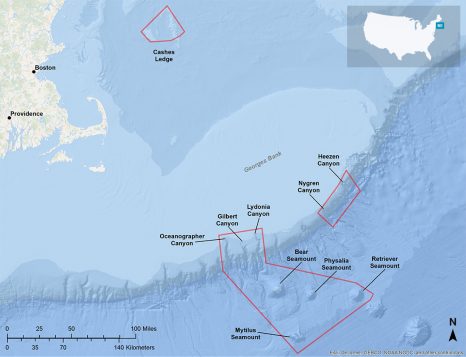 Despite the Obama administration’s declaration that Cashes Ledge has been taken off the table as a possible location for a marine national monument, the divisive issue of the monuments continues to percolate nationally between fishermen and conservationists. From Hawaii to New England, the lines are clearly drawn. Conservation groups have sustained a steady lobbying campaign to convince President Obama to employ the Antiquities Act to create new marine national monuments in the waters around Cashes Ledge, about 80 miles off Gloucester, and the seamounts off southern New England and Monterey, California. “We’re pushing as hard as we can with elected officials and the White House on those areas that have been identified and confirmed by the scientific community as being of great interest,” Peter Shelley, interim president and senior counsel at the Conservation Law Foundation, said of two New England areas. “These areas need permanent protection and this is not going to go away as a priority for us.” “This is not going to go away as a priority for us,” Shelley said. “It is not going to change with (presidential) administrations.” Read the story here 08:17
Despite the Obama administration’s declaration that Cashes Ledge has been taken off the table as a possible location for a marine national monument, the divisive issue of the monuments continues to percolate nationally between fishermen and conservationists. From Hawaii to New England, the lines are clearly drawn. Conservation groups have sustained a steady lobbying campaign to convince President Obama to employ the Antiquities Act to create new marine national monuments in the waters around Cashes Ledge, about 80 miles off Gloucester, and the seamounts off southern New England and Monterey, California. “We’re pushing as hard as we can with elected officials and the White House on those areas that have been identified and confirmed by the scientific community as being of great interest,” Peter Shelley, interim president and senior counsel at the Conservation Law Foundation, said of two New England areas. “These areas need permanent protection and this is not going to go away as a priority for us.” “This is not going to go away as a priority for us,” Shelley said. “It is not going to change with (presidential) administrations.” Read the story here 08:17

National Fisherman Magazine and Support for Marine Monuments
The Envirocons keep pressing for Atlantic Ocean monuments
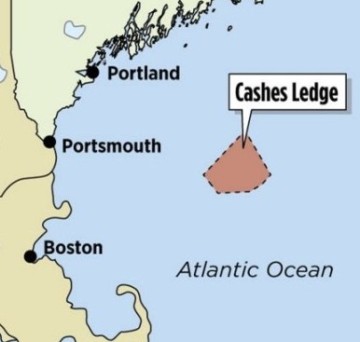 In the final months of President Barack Obama’s term, they’re hoping he’ll protect an underwater mountain and offshore ecosystem in the Gulf of Maine known as Cashes Ledge. They also want him to protect a chain of undersea formations about 150 miles off the coast of Massachusetts known as the New England Coral Canyons and Seamounts. The White House Council on Environmental Quality said in March, and reiterated last week, that while the New England Coral Canyons and Seamounts area is under consideration, Cashes Ledge currently is not. There are no marine national monuments in the Atlantic Ocean. The Conservation Law Foundation, which has been leading the Cashes Ledge effort, is continuing its campaign. It says that a coalition of environmental groups collected more than 250,000 signatures between August 2015 and this month in support of protecting both areas. Read the rest here 09:56
In the final months of President Barack Obama’s term, they’re hoping he’ll protect an underwater mountain and offshore ecosystem in the Gulf of Maine known as Cashes Ledge. They also want him to protect a chain of undersea formations about 150 miles off the coast of Massachusetts known as the New England Coral Canyons and Seamounts. The White House Council on Environmental Quality said in March, and reiterated last week, that while the New England Coral Canyons and Seamounts area is under consideration, Cashes Ledge currently is not. There are no marine national monuments in the Atlantic Ocean. The Conservation Law Foundation, which has been leading the Cashes Ledge effort, is continuing its campaign. It says that a coalition of environmental groups collected more than 250,000 signatures between August 2015 and this month in support of protecting both areas. Read the rest here 09:56
The Enviro Crackpots keep pushing! – Cashes Ledge deserves permanent protection
 World famous oceanographer Sylvia Earle dived Cashes Ledge and declared it to be a “Yellowstone” of the ocean. Visions of enviro’s appear in my head doing the wave chanting ocean Serengeti over and over, trance like,,, Despite all the fishing that has rendered much of the Northeast a shell of its colonial riches, there remains in precious spots underwater life every bit the rival of the California coast and the Caribbean. Two such areas, Cashes Ledge and the
World famous oceanographer Sylvia Earle dived Cashes Ledge and declared it to be a “Yellowstone” of the ocean. Visions of enviro’s appear in my head doing the wave chanting ocean Serengeti over and over, trance like,,, Despite all the fishing that has rendered much of the Northeast a shell of its colonial riches, there remains in precious spots underwater life every bit the rival of the California coast and the Caribbean. Two such areas, Cashes Ledge and the New England Mid Atlantic Coral Canyons and Seamounts, deserve national marine monument status from President Obama before he leaves office. But there aren’t any such protections in the Atlantic, and groups such as the Conservation Law Foundation, the National Geographic Society, the Pew Charitable Trusts, and the National Resources Defense Council, are campaigning for protection. (Full disclosure: I (Derrick Jackson) coauthored a book on Maine’s puffin restoration and discussed the bird’s winter feeding at a CLF luncheon this winter). Get the gist? Read the rest here 16:58
Working the system makes the system unworkable, by Ronald Smolowitz
 As the owner of Coonamessett Farm in Falmouth and a partner at the Woods Hole Oyster Co., I spend as much time navigating regulatory hurdles as I do tending the farm or going to sea. Many farmers and fishermen have similar fights with overbearing bureaucracy, something likely to become more common as the noose of government regulations tightens.,,Things aren’t much better out at sea. I do a substantial amount of research for the scallop industry, and sustainability is the key reason scallop management is a continued successes. Through a system of rotational management, certain zones are fished while others are left off-limits to allow them to repopulate. Much as with farmland, this system allows the resources to remain sustainable. Read the article, Click here 09:47
As the owner of Coonamessett Farm in Falmouth and a partner at the Woods Hole Oyster Co., I spend as much time navigating regulatory hurdles as I do tending the farm or going to sea. Many farmers and fishermen have similar fights with overbearing bureaucracy, something likely to become more common as the noose of government regulations tightens.,,Things aren’t much better out at sea. I do a substantial amount of research for the scallop industry, and sustainability is the key reason scallop management is a continued successes. Through a system of rotational management, certain zones are fished while others are left off-limits to allow them to repopulate. Much as with farmland, this system allows the resources to remain sustainable. Read the article, Click here 09:47
Opinion: Cashes Ledge decision a victory for open government
 The decision by the Obama administration to pass on a proposal to make a large swath of the Gulf of Maine a national monument is not only a victory for fishermen. It’s also a win for those who favor open government. News came late last week that the administration would not, in fact, use the federal Antiquities Act to make the area around Cashes Ledge a permanent “maritime national monument” by executive decree. The environmental lobby is not abandoning its efforts. Read the rest here 07:49
The decision by the Obama administration to pass on a proposal to make a large swath of the Gulf of Maine a national monument is not only a victory for fishermen. It’s also a win for those who favor open government. News came late last week that the administration would not, in fact, use the federal Antiquities Act to make the area around Cashes Ledge a permanent “maritime national monument” by executive decree. The environmental lobby is not abandoning its efforts. Read the rest here 07:49
Environmentalists, Fishermen At Odds Over Turning Cashes Ledge Into National Monument
 As some New England fishermen struggle under intense quota cuts, the industry is fearing another political move that could prove to have devastating consequences. There is an effort to designate Cashes Ledge — a historically important fishing area — as a national marine monument. This would require a presidential order and would effectively close the area to all commercial activity. About 80 miles off the coast of Cape Ann, a cold-water kelp forest grows from the tip of a ridge that rises from the ocean floor known as Cashes Ledge. Audio, Read the rest here 17:12
As some New England fishermen struggle under intense quota cuts, the industry is fearing another political move that could prove to have devastating consequences. There is an effort to designate Cashes Ledge — a historically important fishing area — as a national marine monument. This would require a presidential order and would effectively close the area to all commercial activity. About 80 miles off the coast of Cape Ann, a cold-water kelp forest grows from the tip of a ridge that rises from the ocean floor known as Cashes Ledge. Audio, Read the rest here 17:12
Transparency? Christian Putnum SLAMS The Obama Administration, Enviro Groups, and NOAA collusion
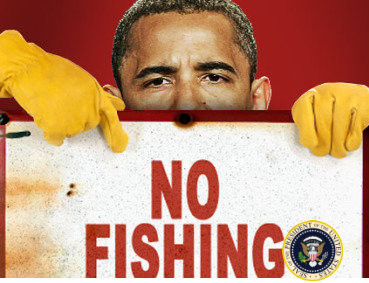 The National Oceanic and Atmospheric Administration and the Obama Administration are working closely with several environmental groups to “protect” vast areas of ocean off New England’s coast from the dreaded commercial and recreational fishermen. After NOAA’s utter failure to work with the stakeholders that make up the fishing community through the National Marine Fisheries Service, rebranded NOAA Fisheries after the name became synonymous with disastrous over-regulation, it appears an even less transparent process is now underway to regulate our natural resources. Read the article here 07:55
The National Oceanic and Atmospheric Administration and the Obama Administration are working closely with several environmental groups to “protect” vast areas of ocean off New England’s coast from the dreaded commercial and recreational fishermen. After NOAA’s utter failure to work with the stakeholders that make up the fishing community through the National Marine Fisheries Service, rebranded NOAA Fisheries after the name became synonymous with disastrous over-regulation, it appears an even less transparent process is now underway to regulate our natural resources. Read the article here 07:55
House Natural Resources Committee Demands Obama Administration Info on Marine Monument Designtions
 The U.S. House Natural Resources Committee has demanded records of all meetings, correspondence and memos related to marine monument designations. The letter references emails that “show representatives from the Conservation Law Foundation (CLF), the Natural Resources Defense Council, and the Pew Charitable Trusts warning their members to avoid talking to the ‘outside world’ about the organizations’ efforts to influence the Administration to announce a Marine National Monument off of New England during the ‘Our Ocean Conference’ in Chile.” The emails in question were originally obtained by Saving Seafood via public records requests, and were first reported by Greenwire. Read the rest here 17:00
The U.S. House Natural Resources Committee has demanded records of all meetings, correspondence and memos related to marine monument designations. The letter references emails that “show representatives from the Conservation Law Foundation (CLF), the Natural Resources Defense Council, and the Pew Charitable Trusts warning their members to avoid talking to the ‘outside world’ about the organizations’ efforts to influence the Administration to announce a Marine National Monument off of New England during the ‘Our Ocean Conference’ in Chile.” The emails in question were originally obtained by Saving Seafood via public records requests, and were first reported by Greenwire. Read the rest here 17:00
Enviro Lobby’s Coordinated Efforts to back door NE Marine Monument’s exposed!
 One month ago, environmental groups were strategizing over their latest bid: Get the Obama administration to create its first marine monument off New England. They had talks with fishing groups, lawmakers and think tanks. At the end of August, they exchanged emails over their progress — and in one, the president of the Conservation Law Foundation warned everyone to keep quiet about the possibility of a breakthrough at the upcoming Our Ocean Conference in Chile. The email showed up in response to a public records request that Saving Seafood filed with the office of Maine Gov. Paul LePage’s. Read the rest here Read the email’s here 08:40
One month ago, environmental groups were strategizing over their latest bid: Get the Obama administration to create its first marine monument off New England. They had talks with fishing groups, lawmakers and think tanks. At the end of August, they exchanged emails over their progress — and in one, the president of the Conservation Law Foundation warned everyone to keep quiet about the possibility of a breakthrough at the upcoming Our Ocean Conference in Chile. The email showed up in response to a public records request that Saving Seafood filed with the office of Maine Gov. Paul LePage’s. Read the rest here Read the email’s here 08:40
City of Gloucester joins fight against marine monument plan
 In her letter read into the record Tuesday night at a NOAA-hosted town meeting in Providence to discuss the issue, Mayor Sefatia Romeo Theken stated the city’s objections to designate the deep sea canyons and seamounts — and Cashes Ledge — as a national monument. “We have learned over the years to take a balanced perspective on issues, to make sure to have researched all the facts, and to include the public in our decisions,” Romeo Theken wrote. “It is from this perspective that I write in opposition to the Conservation Law Foundation-organized proposal for a national monument.” Read the rest here 07:01
In her letter read into the record Tuesday night at a NOAA-hosted town meeting in Providence to discuss the issue, Mayor Sefatia Romeo Theken stated the city’s objections to designate the deep sea canyons and seamounts — and Cashes Ledge — as a national monument. “We have learned over the years to take a balanced perspective on issues, to make sure to have researched all the facts, and to include the public in our decisions,” Romeo Theken wrote. “It is from this perspective that I write in opposition to the Conservation Law Foundation-organized proposal for a national monument.” Read the rest here 07:01
Con groups, fishermen divided over NOAA plan for marine national monument
 Hundreds of people filled a conference hall Tuesday night to speak out on a federal proposal to permanently protect a network of deep-sea canyons and underwater mountains off New England by creating the first marine national monument on the Atlantic coast. Terry Stockwell, chairman of the New England Fishery Management Council, said the existing regulatory framework already protects Cashes Ledge and the New England Coral Canyons and Seamounts area. The council in April voted in favor of keeping Cashes Ledge closed to most fishing. Read the rest here 18:29
Hundreds of people filled a conference hall Tuesday night to speak out on a federal proposal to permanently protect a network of deep-sea canyons and underwater mountains off New England by creating the first marine national monument on the Atlantic coast. Terry Stockwell, chairman of the New England Fishery Management Council, said the existing regulatory framework already protects Cashes Ledge and the New England Coral Canyons and Seamounts area. The council in April voted in favor of keeping Cashes Ledge closed to most fishing. Read the rest here 18:29
Analysis: New England Marine Monument Proposals Overlook Existing Protections, Overstep Democratic Management
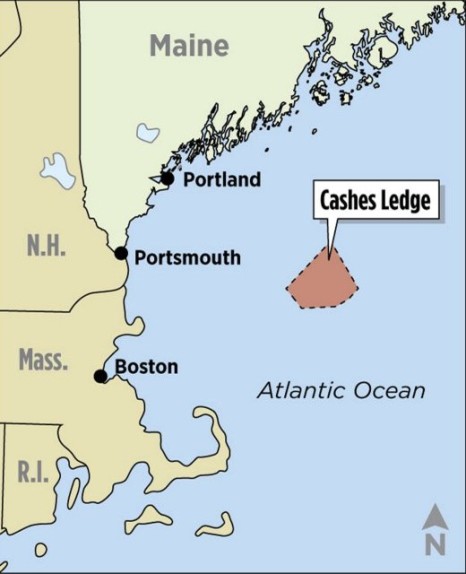 Fishermen, fisheries managers, and environmentalists agree that the Cashes Ledge region of the Gulf of Maine is home to some of the most important marine environments in New England. Since the early 2000s, federal fisheries managers have recognized the value of these areas and have taken proactive steps to protect their unique habitats, preventing commercial fishermen from entering the areas and allowing them to develop mostly undisturbed from human activity. But according to several environmental groups, including the Conservation Law Foundation, Pew Charitable Trusts, the National Geographic Society, and the Natural Resources Defense Council, such long-standing and effective protections are suddenly insufficient. Read the rest here 09:17
Fishermen, fisheries managers, and environmentalists agree that the Cashes Ledge region of the Gulf of Maine is home to some of the most important marine environments in New England. Since the early 2000s, federal fisheries managers have recognized the value of these areas and have taken proactive steps to protect their unique habitats, preventing commercial fishermen from entering the areas and allowing them to develop mostly undisturbed from human activity. But according to several environmental groups, including the Conservation Law Foundation, Pew Charitable Trusts, the National Geographic Society, and the Natural Resources Defense Council, such long-standing and effective protections are suddenly insufficient. Read the rest here 09:17
Pew Enviro Groups eye Marine National Monuments protections for Cashes Ledge, canyons, seamounts off Cape Cod
 Enviro groups this week plan to call for sprawling areas in the Gulf of Maine and off Cape Cod and Rhode Island to be declared the first “marine national monument” on the eastern seaboard. A January 2009 presidential proclamation established three Pacific Marine National Monuments. Now the Conservation Law Foundation (CLF) and partners like the National Geographic Society, Pew Charitable Trusts and the Natural Resources Defense Council are seeking protections for the Closed Area in the Gulf of Maine and the New England Canyons and Seamounts off the Cape – areas CLF describes as “deep sea treasures.” Read the rest here 16:17
Enviro groups this week plan to call for sprawling areas in the Gulf of Maine and off Cape Cod and Rhode Island to be declared the first “marine national monument” on the eastern seaboard. A January 2009 presidential proclamation established three Pacific Marine National Monuments. Now the Conservation Law Foundation (CLF) and partners like the National Geographic Society, Pew Charitable Trusts and the Natural Resources Defense Council are seeking protections for the Closed Area in the Gulf of Maine and the New England Canyons and Seamounts off the Cape – areas CLF describes as “deep sea treasures.” Read the rest here 16:17
Environmentalists are upset over NEFMC Georges Bank vote
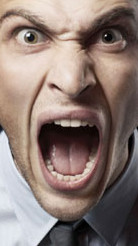 Peter Shelley, senior attorney for the Conservation Law Foundation, charged that the council ignored years of scientific data and analysis and “caved to industry pressures” regarding Georges Bank. (The council did approve four other areas of habitat protection.) “The council hammered the final nail into the coffin of what could have been a landmark victory for ocean habitats protection in New England,” Shelley wrote on his organization’s web site. Dr. Sarah Smith, a member of the Fisheries Solutions Center at the Environmental Defense Fund, wrote The Standard-Times in an e-mail, “We are disappointed that the council,,, Read the rest here 09:14
Peter Shelley, senior attorney for the Conservation Law Foundation, charged that the council ignored years of scientific data and analysis and “caved to industry pressures” regarding Georges Bank. (The council did approve four other areas of habitat protection.) “The council hammered the final nail into the coffin of what could have been a landmark victory for ocean habitats protection in New England,” Shelley wrote on his organization’s web site. Dr. Sarah Smith, a member of the Fisheries Solutions Center at the Environmental Defense Fund, wrote The Standard-Times in an e-mail, “We are disappointed that the council,,, Read the rest here 09:14
Environmental groups criticize reconfiguration of Georges Bank closed area’s
 Environmental groups quickly criticized the move as jeopardizing the health of the ocean in favor of economic interests, while advocates for fishermen said the changes will allow for better management of resources. Peter Shelley, interim president of the Conservation Law Foundation, said the reconfiguration diminishes protected habitat when New England’s cod stock is in historically bad shape.“Instead of exercising conservation stewardship, the council wrote off the future of critical fish habitat areas that needed additional, not fewer, protections,” Read the rest here 09:38
Environmental groups quickly criticized the move as jeopardizing the health of the ocean in favor of economic interests, while advocates for fishermen said the changes will allow for better management of resources. Peter Shelley, interim president of the Conservation Law Foundation, said the reconfiguration diminishes protected habitat when New England’s cod stock is in historically bad shape.“Instead of exercising conservation stewardship, the council wrote off the future of critical fish habitat areas that needed additional, not fewer, protections,” Read the rest here 09:38
Our View: Facts prevail in House vote on fisheries – seeing through an environmentalist-created fog
 In politics, repeating an argument so frequently and with such authority as to allow it to become accepted as fact is a familiar tactic. But the fact in this case is that the 10-year rebuilding benchmark so jealously protected by advocates such as Pew Charitable Trust, the Conservation Law Foundation and even the president’s policy advisers is the genuinely arbitrary figure, with no basis in data. The fact is that data collected under the proposals in HR 1335 and the amendment would bring it in from more sources and would necessarily provide better assessments for administrators. Read the rest here 08:51
In politics, repeating an argument so frequently and with such authority as to allow it to become accepted as fact is a familiar tactic. But the fact in this case is that the 10-year rebuilding benchmark so jealously protected by advocates such as Pew Charitable Trust, the Conservation Law Foundation and even the president’s policy advisers is the genuinely arbitrary figure, with no basis in data. The fact is that data collected under the proposals in HR 1335 and the amendment would bring it in from more sources and would necessarily provide better assessments for administrators. Read the rest here 08:51
NOAA’s Draft Omnibus Habitat Amendment 2 – Mayor Kirk pushes fishery options to N.E. panel
 Gloucester Mayor Carolyn Kirk is urging the New England Fisheries Management Council to keep in mind the perilous plight of the Gloucester and Northeast groundfishing fleet as it maps out habitat protection areas as part of a major NOAA ocean zoning project. New Bedford Mayor John Mitchell expressed concerns similar to Kirk’s. Yet, in the course of its hearings, the council has also been receiving comments from groups such as the ,,, Read the rest here 09:11
Gloucester Mayor Carolyn Kirk is urging the New England Fisheries Management Council to keep in mind the perilous plight of the Gloucester and Northeast groundfishing fleet as it maps out habitat protection areas as part of a major NOAA ocean zoning project. New Bedford Mayor John Mitchell expressed concerns similar to Kirk’s. Yet, in the course of its hearings, the council has also been receiving comments from groups such as the ,,, Read the rest here 09:11
Great Bay watch: Waterkeeper shares concerns on pollution, propane
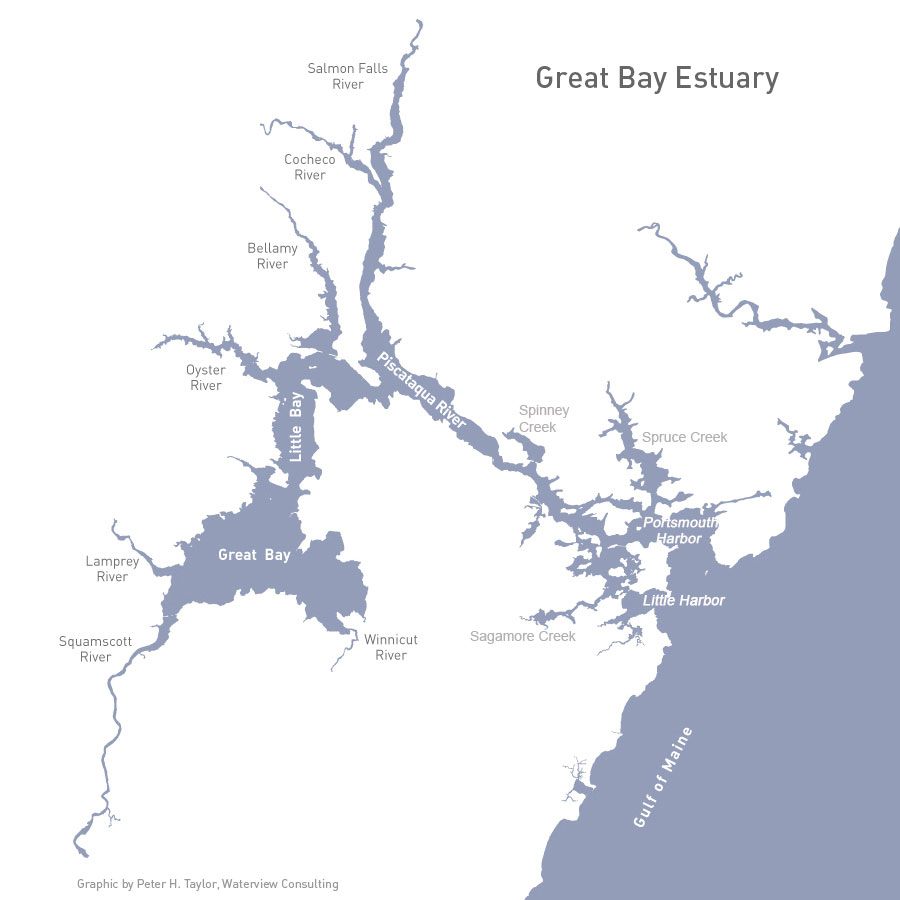 The most compelling one, Barnum said, is nitrogen discharge, either from wastewater plants or from nonpoint pollution such as runoff from fertilizers. He said nitrogen has killed most of the eelgrass in Great Bay and Little Bay. “It’s just a vital component,” Barnum said of eelgrass. “If we didn’t have the eelgrass, we’d be looking at a mud flat, pure and simple.” Read the rest here 08:23
The most compelling one, Barnum said, is nitrogen discharge, either from wastewater plants or from nonpoint pollution such as runoff from fertilizers. He said nitrogen has killed most of the eelgrass in Great Bay and Little Bay. “It’s just a vital component,” Barnum said of eelgrass. “If we didn’t have the eelgrass, we’d be looking at a mud flat, pure and simple.” Read the rest here 08:23






